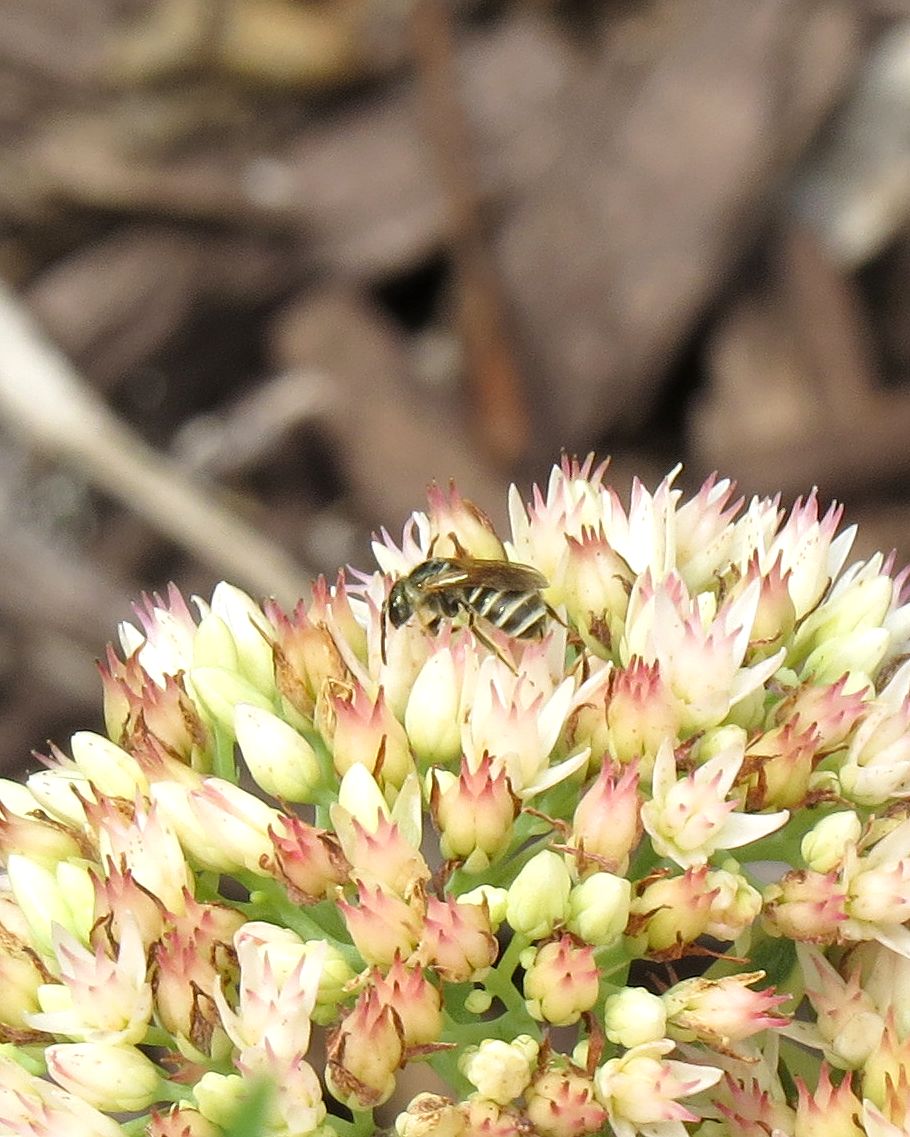Summer Emeralds
Summer Emeralds
By Tom Schroeder
Photos courtesy of Tom Schroeder.
Visiting your flowers this summer are the green gems of the native bee world, the Metallic Green Sweat Bees. These harmless, quarter to half inch, bees live out their entire lives in your yard and need your help to survive. They will provide not only pollinating services but beauty and interest in your garden.
These bees get their name from their shiny green bodies and the fact that some species are attracted to human sweat. These little Sweat Bees are not aggressive and will ignore you while they go about gathering pollen and nectar in the garden.
Their head and thorax are a beautiful, reflective, emerald green. They always remind me of the Iron Man comic book character because they appear to be encased in metal. Their abdomen color can vary. It can be emerald green or a beautiful copper tone or black and white stripes.
They live an interesting life cycle in your yard and garden that is very different than what we think of when we imagine a bee. The adult bees emerge from an underground tunnel in June. The bees live in the flying, adult form for 6 to 8 weeks and then die. The emerging males seek patches of flowers and wait there for females. The females emerge and seek out nesting sites and flowers to feed on.
The bees nest in bare dirt. The hard working female bee digs a tunnel, 12 to 18 inches deep, much like a little ant nest. She lines the sides of it with secretions from her body which makes it water resistant and cuts down on fungal growth. She then makes 7 to 20 foraging trips, visiting hundreds of flowers, to gather enough pollen to provision one egg cell. She packs the pollen into a little mound called a “bee loaf” and lays one egg on it. After that she seals off the egg cell and repeats the foraging, forming another the bee loaf and lays another egg. She will repeat this process to lay up to 12 eggs. Then she seals off the tunnel. The eggs hatch underground after a few days. The larva feed on the pollen and develop through 5 stages until they become a pupa. The pupa forms a primitive cocoon and then rests underground until the next summer when it develops into an adult and emerges to repeat the cycle.
For the summer, fall and winter, under our feet, while we mow the lawn and while we walk through the garden, the little Sweat Bee pupa are resting underground.
Metallic Green Sweat Bees only need three things in order to coexist with us in our yards and gardens. They need a variety of open faced flowers, blooming June to November, bare dirt for nesting sites and no pesticide exposure.
The Xerces Society recommends North America natives: Annual Sunflower, perennial Rosinweed Sunflower, Purple Coneflower, Prairie Clover, Blazing Star, Helenium, Agastache, Rudbeckia, Goldenrod, and Asters. Many seed companies now identify bee friendly plants. Recommended non-natives are: Dianthus, Cleome, Raspberry, Dill, Basil, fall blooming Sedum, Caryopteris Bush, and Panicle Hydrangea Bush.
Sweat bees need bare dirt patches to nest. Consider not mulching part of your garden. Leave bare spots between turf grass in your lawn. Plant fountain grass forms like native Prairie Drop Seed or the non native Miscanthus grass and leave the dirt bare under the cascading grass. The female bees will decide the best place to build their nest tunnel.
Minimize your use of pesticides. What you spray to kill the bad bugs will also kill the good bugs. There are many good books on Integrated Pest Management.
The beautiful Metallic Green Sweat Bees have lived in the Kansas City area since long before humans migrated here. They now depend on our help to provide them a habitat for their survival. In return they will provide us with pollenating services and flying emerald beauty.
Tom Schroeder is a Missouri Master Naturalist and a volunteer for Kansas City Wildlands. He gardens in south Kansas City.




